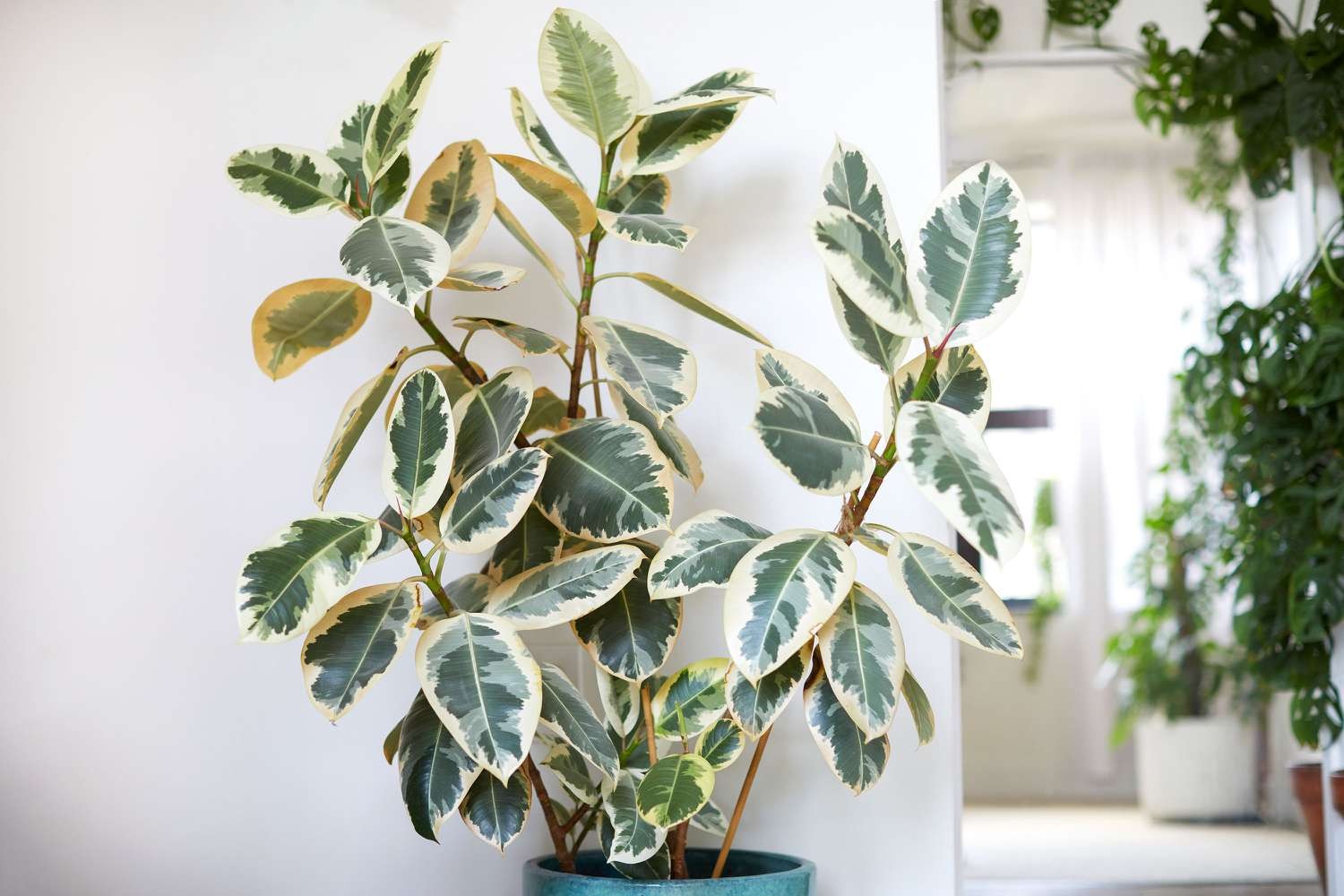Ficus Tineke, a variegated version of the popular rubber plant, is a striking houseplant that can bring a touch of the tropics to any indoor space. With its beautiful blend of green, cream, and sometimes pink hues, it’s not only a visual delight but also a plant that’s relatively easy to care for.
This makes it an excellent choice for beginners looking to add a vibrant yet manageable plant to their collection.
In this guide, you’ll learn everything you need to know about growing and caring for your Ficus Tineke, ensuring it thrives and adds beauty to your home for years to come.
| Botanical Name | Ficus elastica ‘Tineke’ |
| Plant Family | Moraceae |
| Common Name | Ficus Tineke, Variegated Rubber Plant |
| Plant Type | Evergreen tree |
| Origin | Java, Indonesia |
| Mature Size | Up to 6-10 ft tall indoors |
| Growth Habit | Bushy, spreading |
| Sunlight | Bright, indirect light |
| Soil | Well-draining potting mix |
| USDA Zones | 10-12 (indoors elsewhere) |
| Exposure | Avoid direct sunlight; can tolerate some morning sun |
Ideal Growing Conditions for Ficus Tineke
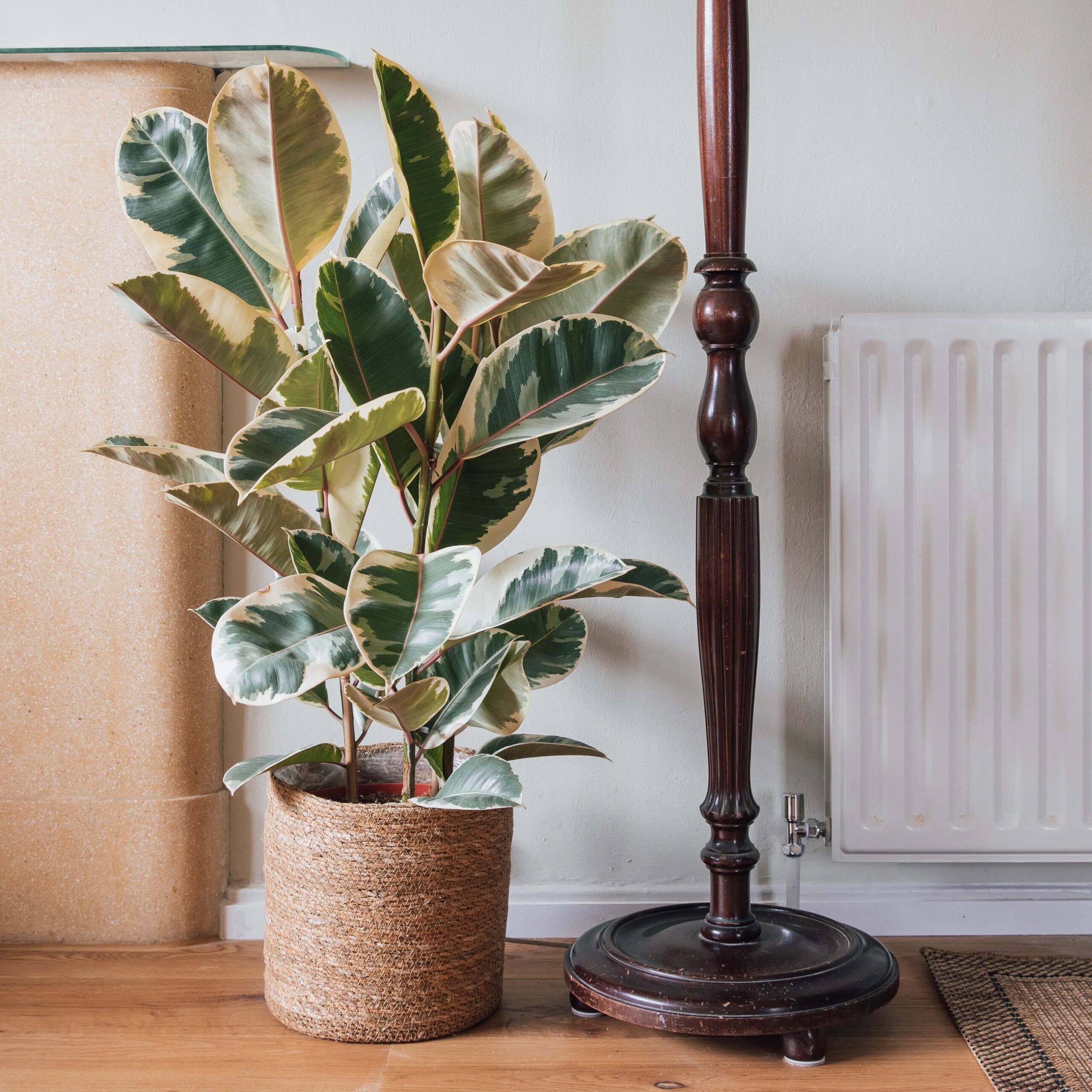
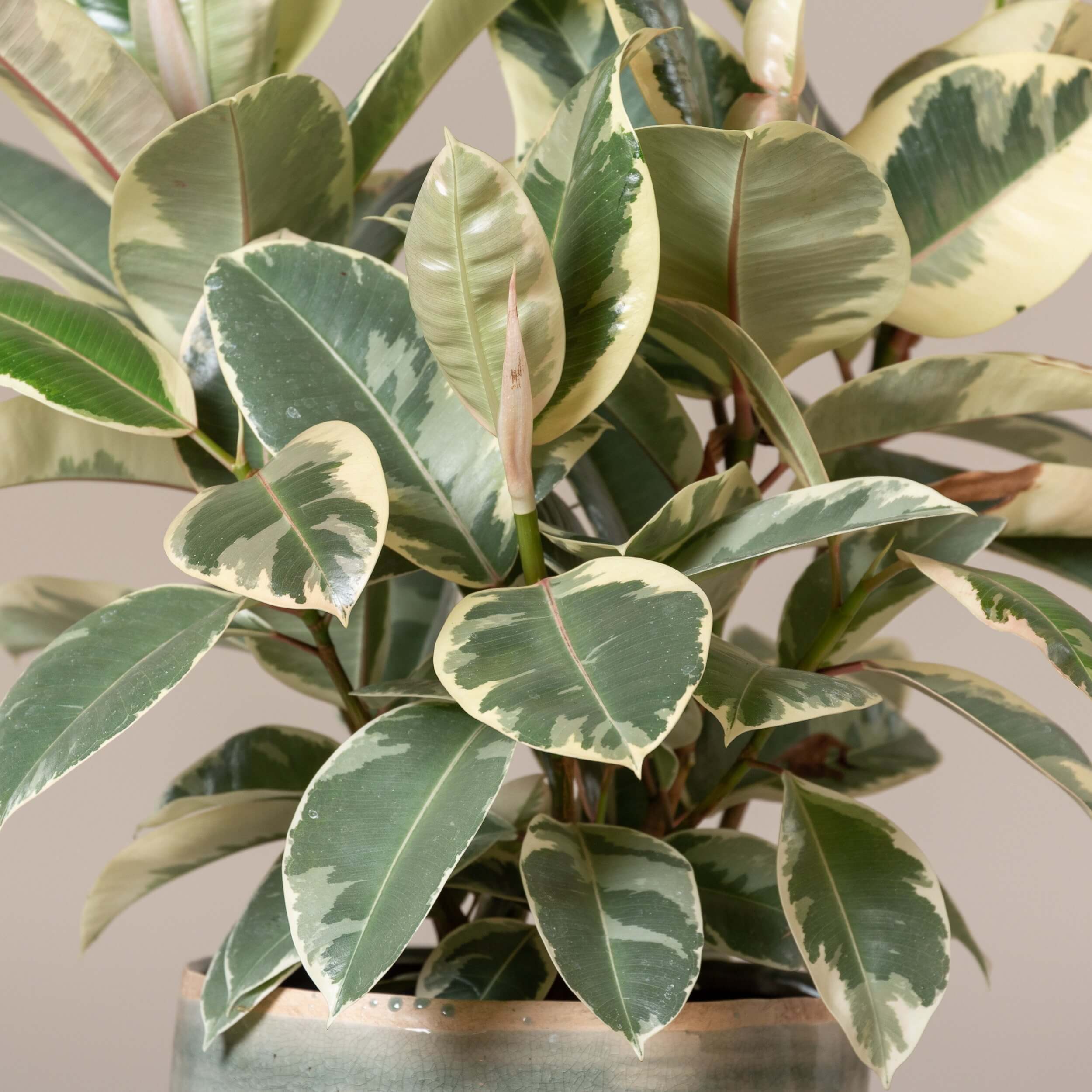
Ficus Tineke thrives in warm, humid environments that mimic its native tropical habitat. Ideally, you should maintain indoor temperatures between 60 to 75 degrees Fahrenheit and avoid exposing the plant to temperatures below 55 degrees or sudden temperature drops.
This plant prefers bright, indirect sunlight, so placing it near an east-facing window or set back from a south- or west-facing window is optimal. Direct afternoon sunlight should be avoided to prevent leaf scorch.
Caring for Your Ficus Tineke
Consistent care is key to keeping your Ficus Tineke healthy. Water the plant when the top couple of inches of soil feel dry, which typically means once every one to two weeks during the growing season. Be careful not to overwater, as this can lead to root rot. Instead, aim for deep watering and avoid getting water on the leaves to prevent staining.
During the growing season, feed your plant with a weak, liquid houseplant fertilizer every few weeks. Refrain from fertilizing in the winter months when the plant’s growth slows down. Moderate humidity is also appreciated, so consider using a humidifier or placing a water tray near the plant to maintain the ideal humidity level.
Pruning and Maintenance
To maintain a neat appearance and encourage healthy foliage, prune your Ficus Tineke occasionally. Trim off any leggy stems and unhealthy leaves just above the nodes to promote new growth. Always use clean, sharp tools to prevent infection and wear gloves to protect your hands from the plant’s sap.
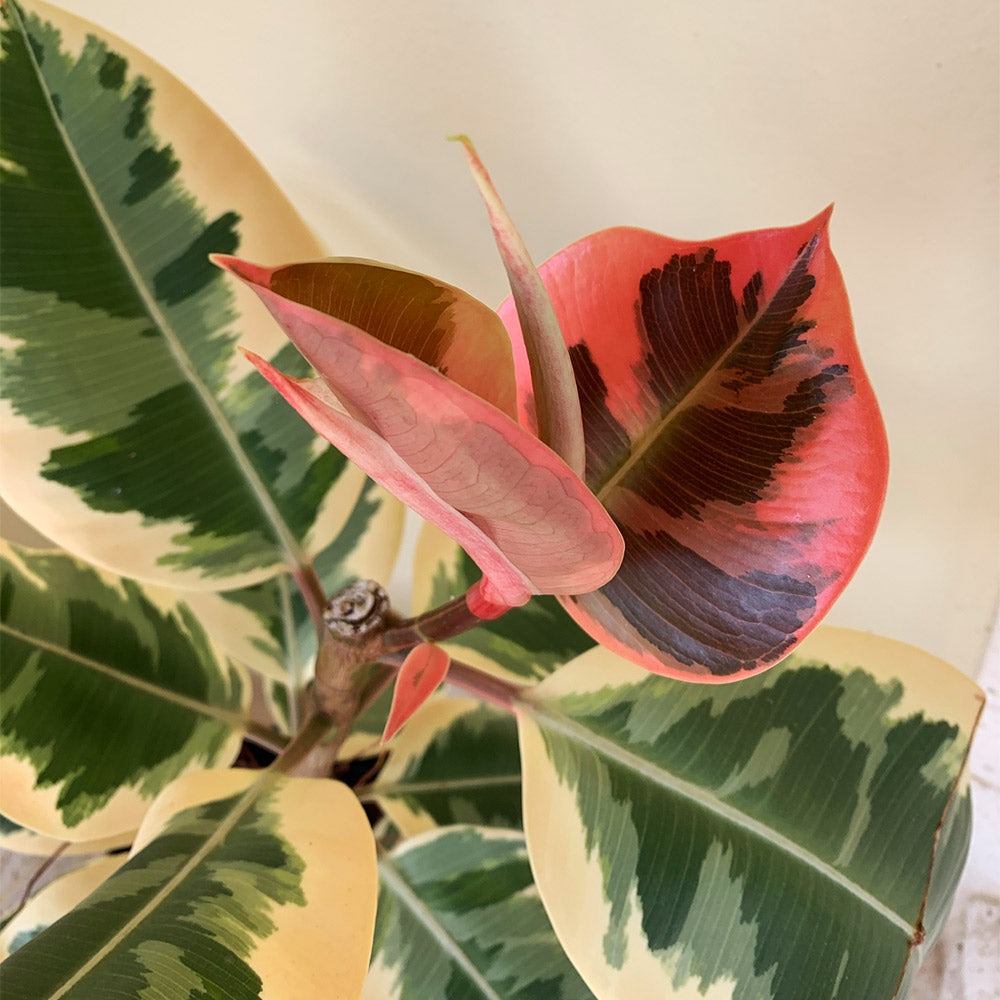
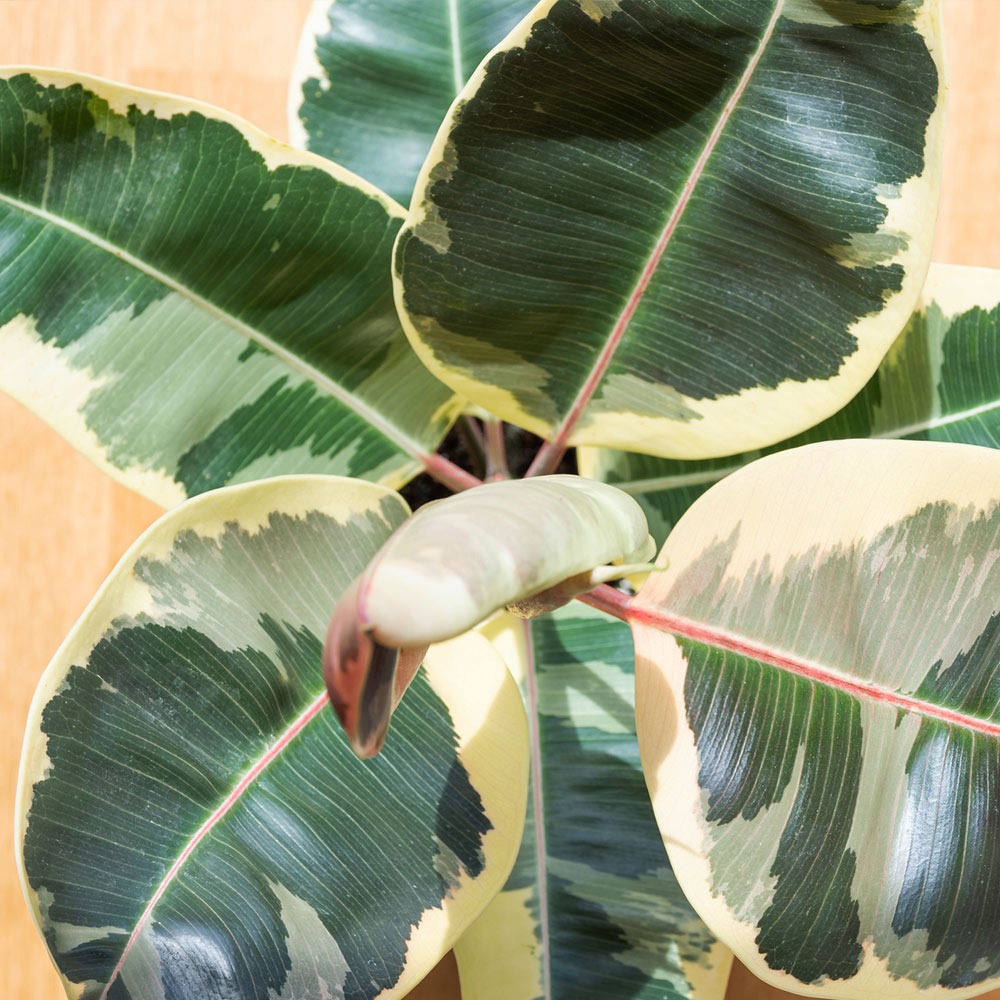
Propagating Your Ficus Tineke
Propagating Ficus Tineke is straightforward and can be done by taking stem cuttings. Here’s a step-by-step guide:
- Step 1: Choose a healthy stem and cut it just above a node using sterilized pruning shears.
- Step 2: Remove the lower leaves and allow the cutting to dry for a few hours to let the sap seal.
- Step 3: Dip the cut end in rooting hormone and plant it in a pot filled with a well-draining potting mix.
- Step 4: Water the cutting and place it in a warm spot with bright, indirect light.
- Step 5: Keep the soil consistently moist but not soggy, and in a few weeks, you should notice new growth indicating successful propagation.
Potting and Repotting
Ficus Tineke should be repotted every one to two years as it is a relatively fast grower. Choose a pot that’s only a few inches larger in diameter than the original one to prevent overpotting, which can lead to issues. Use fresh, well-draining potting mix and ensure the pot has adequate drainage holes.
Common Problems With Ficus Tineke
Yellowing Leaves
Yellow leaves are often a sign of overwatering. Ensure you’re not watering your Ficus Tineke too frequently. The plant prefers the top few inches of soil to dry out before being watered again. Inadequate light can also cause yellowing, so make sure your plant is receiving bright, indirect sunlight.
Brown Spots on Leaves
Brown spots can be a symptom of overwatering or fungal issues. If overwatering is the cause, adjust your watering habits to allow the soil to dry out more between waterings. If a fungal issue is suspected, remove affected leaves, improve air circulation, and consider using a fungicide.
Overwatering
Overwatering is the most common problem with rubber plants. If the plant loses its luster, check the soil moisture and adjust your watering schedule. Ensure the pot has good drainage to prevent water from sitting at the bottom.
Leaf Drop
Leaf drops can occur when the plant isn’t getting enough natural light. Move your Ficus Tineke to a brighter location, but be cautious of direct sunlight, which can scorch the leaves. Rotate the plant regularly to ensure even growth.
FAQs
Yes! The Ficus Tineke is quite forgiving and easy to grow indoors. Its low maintenance needs make it a great choice for beginners. Just be sure to provide adequate bright, indirect light and consistent moisture.
An east or west-facing window where the plant can get lots of indirect sunlight is ideal. A south-facing window may work if you use a sheer curtain to filter the light.
With proper care, a Ficus Tineke can live for many years. Some sources state an average indoor lifespan of around 10-15 years. However, others note they can survive for several decades with ideal conditions.
It is possible for a ficus to regrow leaves after losing them all, but recovery will be a gradual process. Ensure the plant has adequate moisture and humidity. Remove any dead branches and wait for new growth.
